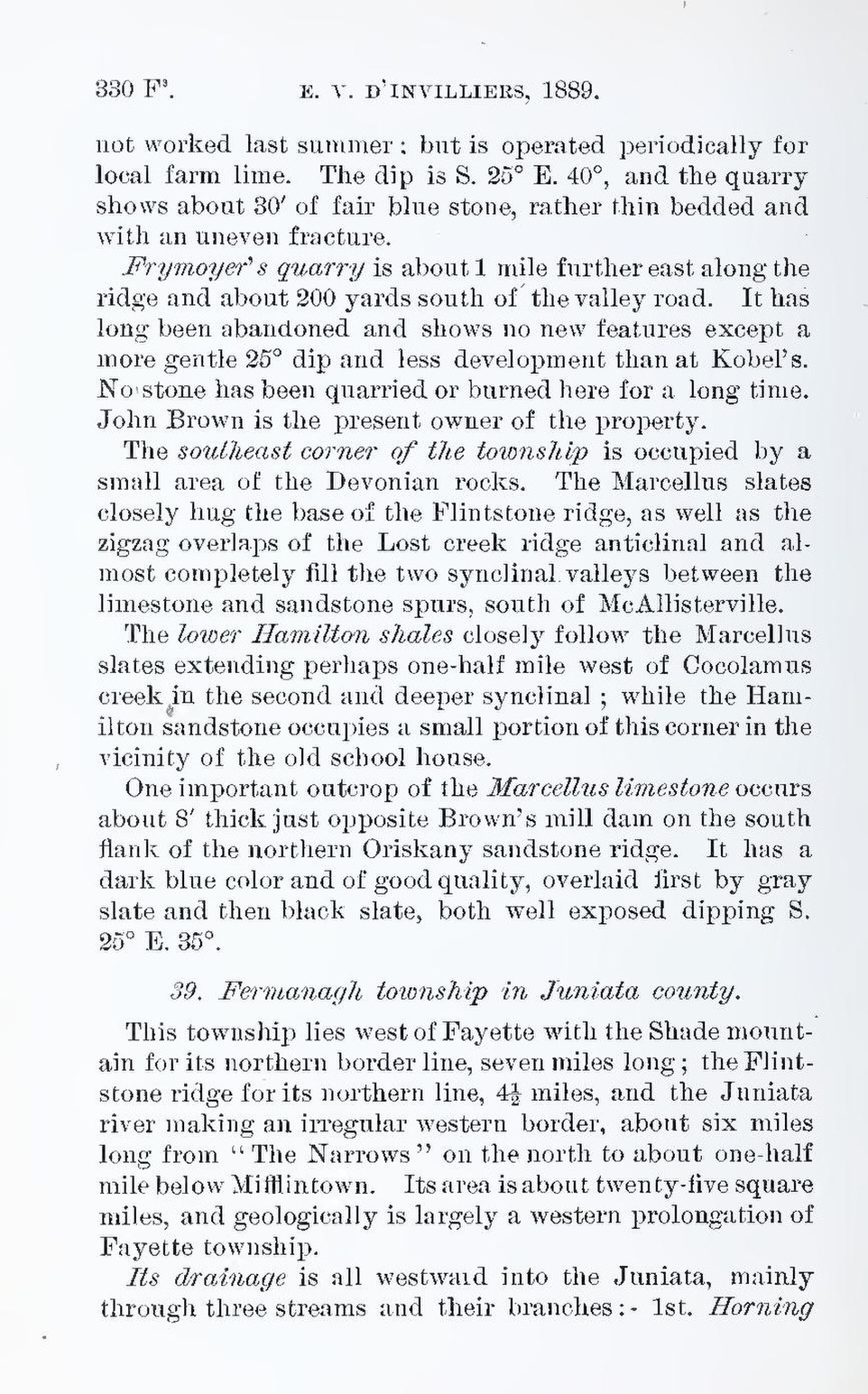not worked last summer: but is operated periodically for local farm lime. The dip is S. 25° E. 40°, and the quarry shows about 30′ of fair blue stone, rather thin bedded and with an uneven fracture.
Frymoyer’s quarry is about 1 mile further east along the ridge and about 200 yards south of the valley road. It has long been abandoned and shows no new features except a more gentle 25° dip and less development than at Kobel’s. No stone has been quarried or burned here for a long time. John Brown is the present owner of the property.
The southeast corner of the township is occupied by a small area of the Devonian rocks. The Marcellus slates closely hug the base of the Flintstone ridge, as well as the zigzag overlaps of the Lost creek ridge anticlinal and almost completely fill the two synclinal valleys between the limestone and sandstone spurs, south of McAllisterville.
The lower Hamilton shales closely follow the Marcellus slates extending perhaps one-half mile west of Cocolamus creek in the second and deeper synclinal; while the Ham ilton sandstone occupies a small portion of this corner in the vicinity of the old school house.
One important outcrop of the Marcellus limestone occurs about 8′ thick just opposite Brown’s mill dam on the south flank of the northern Oriskany sandstone ridge. It has a dark blue color and of good quality, overlaid first by gray slate and then black slate, both well exposed dipping S. 25° E. 35°.
39. Fermanagh township in Juniata county.
This township lies west of Fayette with the Shade mountain for its northern border line, seven miles long; the Flintstone ridge for its northern line, 4½ miles, and the Juniata river making an irregular western border, about six miles long from “The Narrows” on the north to about one-half mile below Mifflintown. Its area is about twenty-five square miles, and geologically is largely a western prolongation of Fayette township.
Its drainage is all westward into the Juniata, mainly through three streams and their branches:— 1st. Horning
